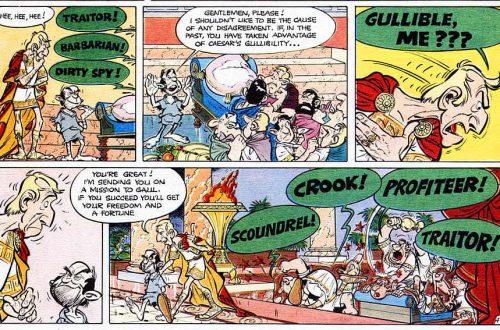Guest post by Aymenn Jawad Al-Tamimi
Recently you may have seen several citations of a certain Theodore Dalrymple (the pen name of Anthony Daniels) in prominent media outlets like The Wall Street Journal, where he is interviewed to provide psychoanalysis of Norwegian mass-murderer Anders Breivik. These appearances are not the first time Dalrymple has come into the public spotlight: over the years, he has written for publications across the political spectrum, ranging from the Independent to the Daily Telegraph.
In advancing his arguments, Dalrymple, who previously worked as a prison psychiatrist in England, primarily draws on anecdotal experiences with the numerous patients he has treated throughout his career. Indeed, in the introduction to his collection of essays entitled “Life at the Bottom” (Ivan R. Dee 2001), he claims that he has “interviewed some ten thousand people who have made an attempt (however feeble) at suicide” and that from this source alone, he has “learned about the lives of some fifty thousand people” (pg. vii).
I have never been fond of arguments based on hearsay, although I have enjoyed reading Dalrymple’s essays for quite some time because of his style of prose that is marked by highly comprehensible sentence structure and is peppered with Latin phrases. In any case, I am not here to discuss the merit of themes in Dalrymple’s work. Rather, the real question is whether the doctor’s anecdotal accounts are actually true. In short, as a former “distinguished foreign correspondent for the BBC” once supposedly asked him: Has he simply “made it all up” (from the article in “Life at the Bottom” entitled “Seeing is not Believing”-pg. 245)?
The other day I remembered that one of the essays in “Life at the Bottom”- entitled “And Dying Thus Around Us Every Day” (published 2001)- contains an anecdotal account (pg. 175-77) related to the essay’s broader theme of being cowed by accusations of institutionalized racism, whether in the workplace or in media. It turns out that this same account appears in somewhat condensed form in a later article by him with the title “A Modern Witch Trial,” which deals with the same subject and appeared in the Spring 2009 issue of City Journal, a publication to which Dalrymple regularly contributes.
The outline of the story is as follows: a young black man who turned into a recluse attempted suicide by barricading himself in the house and slitting his wrists. Dalrymple, thinking the man was mentally ill, suggested to the patient’s mother that he should not be released from hospital; that he might remain for further treatment. At first, the mother agreed, but then at least one friend of the young man- also black- accused Dalrymple of racism. The mother subsequently turned against the doctor. Feeling the heat amid the prospect of a violent row, Dalrymple agreed to release the young man from hospital, even though he had power within the law to retain the patient for further treatment. He therefore issued a declaration (only with moral validity, not legal) to make it clear that neither he nor the hospital could be held responsible for anything that might happen to the young man on release. The young man later killed himself, although family and friends decided not to hold Dalrymple responsible.
However, there are variations in the story:
(i) In “And Dying Thus Around Us Every Day,” the mother called the fire department to break into the barricaded house, discovering the young man unconscious with his slit wrists (pg. 175), but in “A Modern Witch Trial,” police and family were the ones who forced their way into the barricaded house.
(ii) In the 2001 essay, Dalrymple claims that both one of the young man’s brothers and a friend of the young man accused him of racism, and threatened to bring in other friends and family to cause a disturbance in the hospital if the patient were not released (pg. 176). Nonetheless, in the City Journal article, he just says that the friend came in and threatened to bring in other friends to stir up a disturbance in the hospital. Furthermore, in “And Dying Thus Around Us Every Day,” Dalrymple only claims that he made the mother sign the declaration warning that he could not be held responsible for what might happen to her son (ibid.), but in the City Journal article, he says that both the mother and friend signed the declaration.
(iii) The cause of death: in the 2001 essay, Dalrymple states, “A few weeks later the young man killed himself by hanging” (ibid.). However, in “A Modern Witch Trial,” he claims that “six weeks later, the young man gassed himself to death with car exhaust.”
How does Dalrymple explain the discrepancies in the two accounts of this affair? It seems that the narrative in City Journal is designed to provoke greater outrage: notably with Dalrymple giving in to the threats of a mere friend of the young man (rather than the latter’s family members); and gassing oneself to death sounds much more unusual and horrific than suicide by hanging.
Assuming the incident is true, he must- for obvious reasons- omit names and certain factual details that risk revealing the identities of the patient, his family and friends, and work colleagues. Nevertheless, omission is not the same thing as alteration. If, for example, the young man did kill himself by hanging as he states in the 2001 essay, why not either repeat this detail in the City Journal article or omit it and just affirm that a few weeks after being released the young man committed suicide without specifying how he did so?
What further suggests to me a habit of embellishment is the fact that, when he could name specifics so that readers might check the veracity of his statements, he does not do so. For example, he does not tell us the name of the former “distinguished foreign correspondent for the BBC” who asked him whether he simply made up these accounts of personal experiences with patients in his career as a psychiatrist. Nor does he name the “famous and venerable liberal publication” that hosted the lunch meeting where he supposedly encountered this former BBC correspondent (pg. 245).
Dalrymple assures me that there are no discrepancies at all: the point is, he says, that the fact of the young man’s suicide matters more than the method used. He added that suicide is possible by more than one means at the same time. His first rationale illustrates a reckless disregard for proper fact-checking and concern for consistency. Like Edward Said in his book Orientalism, Dalrymple appears to think that it is okay to play around with specific points like Play-Doh, just as long as he is on to some sort of “Higher Truth.”
As for the second point, he is of course correct (incidentally, Dalrymple had no reason to presume that I did not know this), yet it is highly improbable that you can hang yourself and use car exhaust to kill yourself at the same time. Moreover, he specifies different time intervals for each method of suicide. A few weeks do not amount to six weeks. Either the man killed himself by hanging a few weeks after being released, or he used car exhaust six weeks after his release. Which is it, my dear Theodore?
I urge for a crowdsourcing project of Dalrymple’s writings to detect other instances where he has used the same anecdotal accounts with discrepancies in different articles. Readers can contribute any discoveries they make on this matter in the comments threads, and I will add them as updates to the original blog posting. If Dalrymple is guilty of embellishment as I suspect (or at the worst, complete fabrication- a charge that I will not deign to throw at him owing to insufficient evidence), then he must be exposed publicly, just as Johann Hari’s failure to live up to the basic standards of journalism was brought to light.


